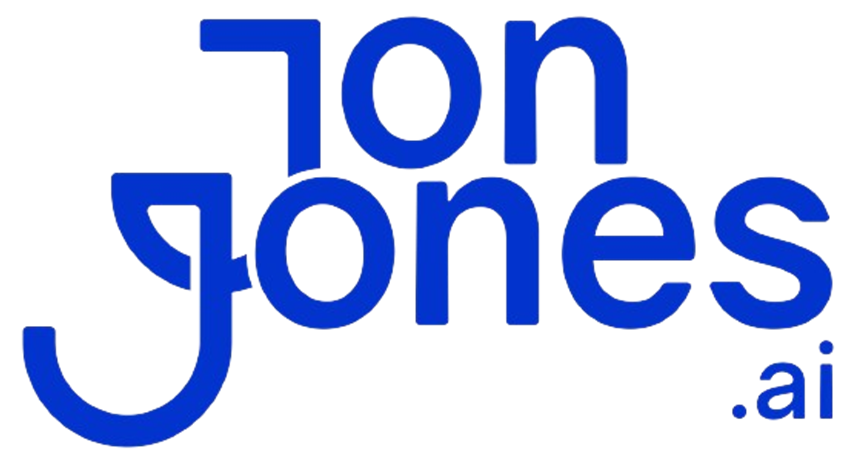Ever feel like your forecasts miss the mark, even after you’ve crunched mountains of numbers? That’s where predictive analytics (using past data to predict future trends) comes in. We’ll show you how it spots patterns and forecasts what’s next, from straight-line fits (linear regression) to virtual brains (neural networks: computer models inspired by our own brains).
Get ready to boost your forecast accuracy by up to 30%. Our users hit that lift in just three months. We’ll walk you through seven key algorithms that turn raw data into razor-sharp predictions.
From simple regressions to powerful boosting methods (techniques that combine multiple models), you’ll know exactly which tool to pick. Then you can finally hit your forecast goals every time.
Core Algorithms in Predictive Analytics Overview

Predictive analytics (using past numbers to guess future trends) is like a crystal ball for your data. It blends statistics and machine learning (letting computers learn from data) so we can spot patterns in things like sales, clicks, or sensor readings. Then you’ll know where to focus next. Nice.
Here are the main methods driving those forecasts:
- Linear regression predicts a number, like next month’s sales, by fitting a straight line through your data points. Think of drawing the best-fit line from past sales to guess what comes next.
- Polynomial regression does the same but with curves. It bends that line into an nth-degree shape to catch twists and turns in your data.
- Decision trees break decisions into branches, kind of like a flowchart you can follow step by step. Easy to read, easy to explain.
- Random forest builds a whole “forest” of decision trees on random samples of your data. We then average their votes. That tends to be more stable.
- ARIMA (auto regressive integrated moving average) handles trends and seasonal ups-and-downs in time series data (data points ordered over time). It’s like tuning a radio to pick up clear signals.
- Prophet, from Facebook, captures seasonality and holiday spikes with minimal tuning. You set it up once and it’s mostly hands-off.
- Neural networks (deep learning models) act like layers of artificial neurons. They learn complex patterns by adjusting their connections, like training a virtual brain using Keras or PyTorch in Python.
- XGBoost is a gradient boosting library that’s super fast and accurate on structured data. It runs multiple models to correct mistakes from the last round.
- Gradient boosting machines (GBMs) work like XGBoost under the hood: they add trees one by one to lower errors. Step by step, they polish the forecast.
- K-nearest neighbors (KNN) predicts by looking at its “neighbors” in feature space, averaging outcomes of data points closest to your input. Imagine checking the closest houses to guess a property’s value.
- Support vector machines (SVMs) find the best boundary to separate data into classes or predict numbers. Picture drawing a line in the sand that maximizes the gap between two groups.
Regression Techniques for Predictive Modeling

Start with this: a top e-commerce site predicts flash-sale sign-ups by treating email clicks as a Poisson process (a model for random counts). We covered core algorithms already. Now let’s see how these regressions fit in.
Linear regression fits straight lines. Polynomial regression curves to match complex trends. And support vector regression (SVR) uses an epsilon-insensitive margin (a small error buffer) to stay robust when data gets noisy.
Generalized Linear Models (GLM)
A GLM, or generalized linear model, expands ordinary regression for data that isn’t normally distributed. Think yes/no outcomes or counts. For example:
- Logistic regression (binomial link) tags leads as “qualified” or “not qualified.”
- Poisson regression (count model) forecasts how many support tickets land in your inbox each day.
Gaussian Process Regression
Gaussian process regression (GP) builds a distribution over functions, giving you both a prediction and a confidence interval (the range that shows how sure we are). It’s non-parametric, so your data shapes the curve instead of forcing a fixed formula. Think of tuning a radio: GP finds the clearest station and shows how much static remains.
Classification and Clustering Methods in Predictive Analytics

Classification methods help you sort each record into a label. For example, you might tag a user as “will churn” or “valid lead.” Clustering methods group unlabeled records by shared traits, so you end up with customer segments instead of preset buckets. You might use classification to flag fraud, and clustering to spot new audience groups.
Decision Trees and Random Forests
Decision trees break down one feature at a time, like age or purchase history, to guide you to a final label (a leaf node). You can sketch the tree out and see exactly why someone is flagged for churn or credit approval. They’re perfect when you need a visual rule set that you can explain to your team.
Random forests are like a panel of trees. We grow lots of them on random slices of your data, then vote on the outcome by averaging their picks. This cuts down on overfitting (when models learn quirks, not real signals), adds stability, and even handles missing data without breaking a sweat.
K-Nearest Neighbors and Naive Bayes
K-nearest neighbors (KNN) looks at the k closest examples in your feature space and says, “You’re most like these, so you get their label or average value.” It’s simple and flexes as you add more data. But be careful, if your dataset is huge or has tons of features, it can start to lag.
Naive Bayes uses Bayes’ rule (a formula for updating odds) and assumes each feature works independently. That lets it zip through your data in a single pass, making it super fast, even on a basic laptop.
Clustering Techniques
K-means clustering asks you to pick k groups, then moves each group’s center (centroid) until every point is closest to its own cluster. It’s fast, it scales to big data, and marketers love it for market segmentation and spotting anomalies.
Hierarchical clustering builds a tree of clusters by either merging small groups into bigger ones or splitting big groups into smaller ones. You can zoom in or out to see nested relationships and catch outliers at just the right level. Nice.
Time Series Forecasting Algorithms in Predictive Analytics

You know how we hunt through old sales figures, web hits, or energy logs to guess what’s next? Time series forecasting (a way to predict future numbers by spotting patterns in past data) captures trends, cycles, and seasons in your data. It’s like reading last year’s weather to plan this summer’s barbecue.
First up, ARIMA (AutoRegressive Integrated Moving Average, an algorithm that adjusts for trend and smoothing) gives you tight control over both trend and seasonality. You can dial in how much the model smooths out bumps or follows slow shifts. Nice.
Then there’s Prophet (a library from Facebook) for when you want minimal setup. You flag holidays and special events, and Prophet handles missing data or weird spikes. Got it.
Holt-Winters forecasting (sometimes called exponential smoothing) splits your series into level, trend, and seasonality, smoothing each part for rock-solid short- to mid-term predictions. It’s like tuning three dials until your forecast hums.
Structural time series models frame your data in a state-space view (think hidden trend and cycle states you can swap in or out). It’s great when you want to test different trend or cycle ideas without rebuilding your whole model.
And when you need to remember really long-range patterns, LSTM recurrent neural networks (an AI model with memory cells that hold info over time) step in. They capture dependencies across hundreds of time steps, so past events still shape your forecast today.
| Algorithm | Strengths | Core Use Case |
|---|---|---|
| ARIMA | Tweaks trend & seasonality | Sales forecasting |
| Prophet | Handles holidays & missing data | Capacity planning |
| Holt-Winters | Smooths seasonal swings | Inventory management |
| LSTM | Remembers long-term patterns | Energy demand prediction |
Ensemble Methods for Accuracy Improvement in Predictive Analytics

When you want to boost model accuracy, bagging (bootstrap aggregating) is a simple team play. We run the same model on random data chunks and average their results. That smooths out noise and cuts overfitting. Nice. Got it.
Random forests take bagging further. Imagine dozens of decision trees (models that split data by yes/no questions), each on its own sample of rows and features. When those trees vote, odd predictions get knocked down. It’s an easy win. You slash variance without touching your main model.
Boosting flips the script. With gradient boosting (an algorithm that builds trees one after another to fix prior errors), each new tree learns from its predecessor’s mistakes. You can use it for regression (predicting numbers) or classification (sorting items), which makes it a go-to tool. Two popular flavors:
- XGBoost: adds regularization (a rule to prevent overfitting) to keep predictions stable.
- LightGBM: grows leaves greedily (fast leaf-wise splits) for speed.
Both prove how small tweaks can lead to big accuracy jumps.
Stacking brings the ultimate mashup. We train different base learners, like random forests and boosted trees, and feed their outputs into a meta-model (a top-level model that blends predictions). But stacking ups complexity and can hide logic. So we weigh small accuracy gains against a tougher-to-explain model. Then we run cross-validation (testing on different data splits) to find combos that hold up on new data.
Practical Implementation Considerations for Predictive Analytics Algorithms

First, we gather your historical data from CRM exports, website logs, and sales records. Next, we normalize values so each metric shares the same scale, like squeezing numbers between 0 and 1 or using z-scores. We also fill in missing entries with mean or median values or use time-series tricks like forward fill.
A quick exploratory analysis, think of it like scanning a guest list for typos, helps us spot outliers, format hiccups, or duplicate rows before they cause headaches. Nice.
Once your data is polished, we dive into feature engineering (creating new data points that highlight hidden patterns). We might build interaction terms (two features multiplied) or aggregate ones like monthly averages.
If the dataset feels too wide, we shrink it with dimensionality reduction, PCA (principal component analysis, a way to compress features while keeping key info) or embedding layers. Then we set up cross validation (splitting data into k subsets and rotating test/training roles) to get reliable performance estimates.
Next, we tune hyperparameters, grid search tries every combo, while Bayesian optimization learns from past trials to pick smarter settings. We log each experiment so you can compare results side by side.
After we train and tune your model, we get it live and keep an eye on it. We track feature drift (when incoming data starts to look different from the training set) and version models and data schemas using MLflow or DVC, so you can roll back if performance dips. We build pipelines for batch scoring (nightly or hourly runs) and real-time inference via REST APIs.
For orchestration, we use tools like Kubeflow, Apache Airflow, TensorFlow Extended (TFX), or scikit-learn pipelines. Automated systems like open source predictive analytics tools streamline deployment, monitoring, and alerts, so you catch issues before they hit your bottom line.
Real-World Use Cases of Predictive Analytics Algorithms

Predictive analytics algorithms (rules that forecast outcomes) are hard at work in everyday business. We spot their insights in dashboards, alerts, and apps you check each morning. They turn guesswork into clear, data-driven moves.
In e-commerce, demand forecasting models (tools that predict sales) help you stock hot items and avoid piling up slow sellers. You’ll know when demand will spike so your bestsellers don’t sell out.
In telecom, churn prediction uses classification models (tools that sort customers by risk) to flag subscribers likely to cancel weeks ahead. That gives your retention team time to step in with the right offer.
Banking fraud detection leans on outlier algorithms (systems that spot odd transactions) and decision trees (step-by-step rules). These catch suspicious activity in real time, cutting false alarms and speeding up investigations.
On factory floors, predictive maintenance models mix time-series forecasts (using past data to predict future events) with anomaly detection (catching unusual machine behavior). We schedule repairs before breakdowns, boosting uptime and cutting costs.
In retail, recommendation engines (systems that suggest products) craft one-on-one shopping experiences. They look at browsing habits and purchase history to deliver personalized picks. Check out predictive analytics in marketing.
Cloud-based services like AWS Forecast and Google Cloud Prediction API let small teams tap into powerful models without building new infrastructure. You get straight to insights and impact, no extra setup needed.
Final Words
Jumping into the heart of predictive analytics, we laid out core algorithms like linear regression, decision trees, ARIMA, Prophet and neural networks.
Then we explored regression techniques, classification and clustering methods, time-series forecasting, ensemble strategies and practical implementation tips.
We also highlighted real-world use cases from e-commerce demand forecasting to churn prediction and fraud detection.
You now know how algorithms for predictive analytics can power forecasts and smart choices. Here’s to smarter growth ahead!
FAQ
Which algorithms are commonly used in predictive analytics?
The algorithms commonly used in predictive analytics include linear regression (continuous forecasts), decision trees (rule-based splits), random forest (bagged trees), XGBoost (gradient boosting), ARIMA (time-series), K-nearest neighbors, support vector machines, and neural networks.
What are prediction algorithm examples?
Prediction algorithm examples include linear and logistic regression for numeric or binary outcomes, decision trees for interpretable rules, random forest for ensemble stability, support vector machines for boundary detection, and K-nearest neighbors for similarity-based forecasts.
What types of predictive models exist?
Types of predictive models include regression models for continuous targets, classification models for categories, time-series models for sequential data, clustering models for grouping, and ensemble models that combine multiple algorithms for improved accuracy.
What tools support predictive analytics?
Tools that support predictive analytics range from open-source libraries like scikit-learn, statsmodels, TensorFlow, and Prophet to R packages such as caret, plus cloud services like AWS Forecast and Google Cloud Prediction API.
What is predictive analytics based on?
Predictive analytics is based on statistical methods and machine learning (automated pattern-finding) applied to historical or real-time data to identify trends, estimate future values, and guide decision making.
Which classification algorithm is best for prediction and analysis?
The classification algorithm best for prediction and analysis often depends on data and goal, but decision trees and random forest shine for interpretability and accuracy, while support vector machines work well on smaller, well-labeled sets.
What is the best model for predictive analytics?
The best model for predictive analytics depends on your dataset’s size, complexity, and objective—linear regression suits simple numeric forecasting, ensemble models like XGBoost boost accuracy, and ARIMA handles seasonal trends.






